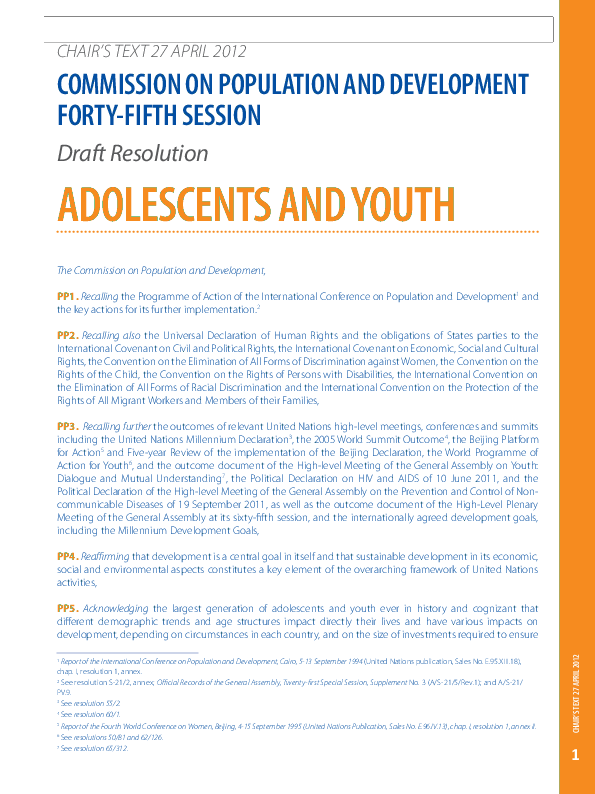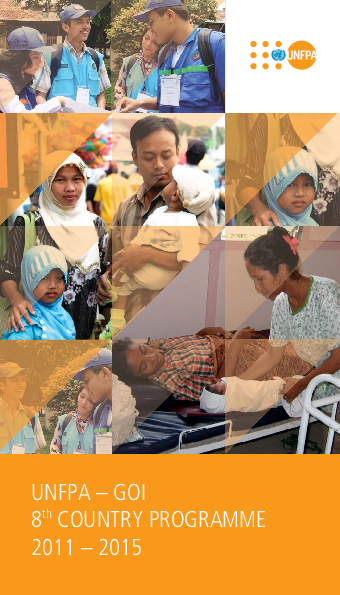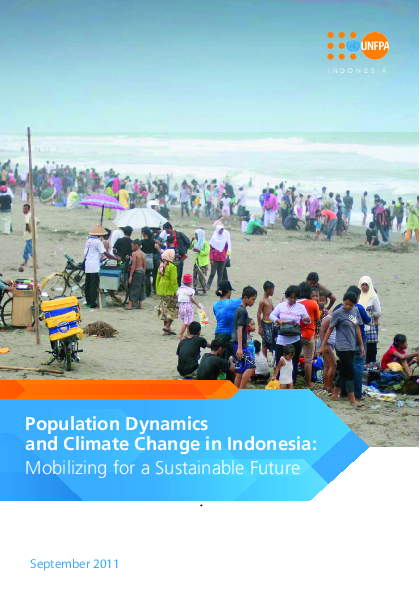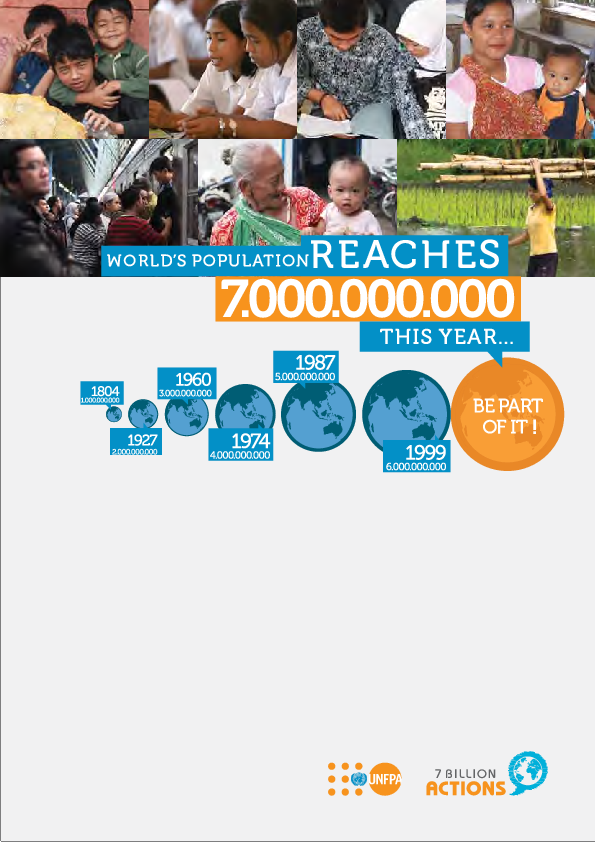You are here
New Releases

Booklet Universal Access to Reproductive Health
Reproductive health is defined as a state of complete physical, mental and social well-being,and not merely the absence of reproductive disease or infirmity [7]. The implications of this definition are far-reaching. Addressing RH demands a comprehensive approach that accounts for physical, mental, and social well-being, rather than focusing singularly on RH-related disease and deaths.

CPD 45th Session Resolution: Adolescents and Youth
Recalling also the Universal Declaration of Human Rights and the obligations of States parties to the International Covenant on Civil and Political Rights, the International Covenant on Economic, Social and Cultural Rights, the Convention on the Elimination of All Forms of Discrimination against Women, the Convention on the Rights of the Child, the Convention on the Rights of Persons with Disabilities, the International Convention on the Elimination of All Forms of Racial Discrimination and the International Convention on the Protection of the Rights of All Migrant Workers and Members of their Families.

State of World Population 2011: People and Possibilities in a World of 7 Billion
Nations like the former Yugoslav Republic of Macedonia and Finland, where fertility is lower and childbearing later than in most other parts of the world, are look-ing for ways to support women who have more children. Nations like Ethiopia and India have launched campaigns to end child marriages and prevent life-threatening adolescent pregnancies.

UNFPA-GoI 8th Country Programme
Over the past five years, the context of Indonesia’s development cooperation has changed as a consequence of the nation’s emergence as a middle income country. This will present significant changes in UNFPA country programming in Indonesia as it enters its eighth cycle for the next five years, particularly in a re-orientation of programme design and strategies as well as in the working modality of the UNFPA Country Office vis-à-vis its partners in the country.

Population Dynamics and Climate Change in Indonesia: Mobilizing for A Sustainable Future
The Government of indonesia has for several years been developing a national strategy to respond to climate change, and the UN has been partnering with the Government within the United Nations Framework Convention for Climate Change (UNFCCC). the Ministry of environment (Klh), in consultation with relevant line ministries and agencies, produced the National Action Plan Addressing Climate Changein November 2007. in July 2008 the president established the National Council on Climate Change (dNpi) to help direct and coordinate the Government’s response to climate change, with himself as Chair and the Minister of environment as executive Chair. in december 2009 the National development planning Agency (Bappenas), following another extensive consultation process, produced the Indonesia Climate Change Sectoral Roadmap (iCCSR), which was then incorporated in the Government’s current 5-Year development plan (RpJMN 2010-14).

Booklet World at 7 Billion
In October 2011, Earth’s population reaches 7 billion. This global milestone is both a great opportunity and a great challenge. Although people are living longer and healthier lives, and couples worldwide are choosing to have fewer children, huge inequities persist. The current pace of growth is adding about 78 million more people every year-the population of Canada , Australia , Greece and Portugal combined [1] Nearly all that growth-97 of every 100 people is occurring in less developed countries, some of which already struggle to meet their people’s needs. Gaps between rich and poor are growing. And more people than ever are vulnerable to food insecurity, water shortages, and weather-related disasters. Meanwhile, many rich and middle-income countries are concerned about low fertility, declining populations and ageing. Whether we can live together on a healthy planet will depend on the decisions we make.